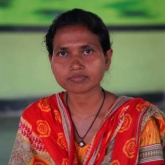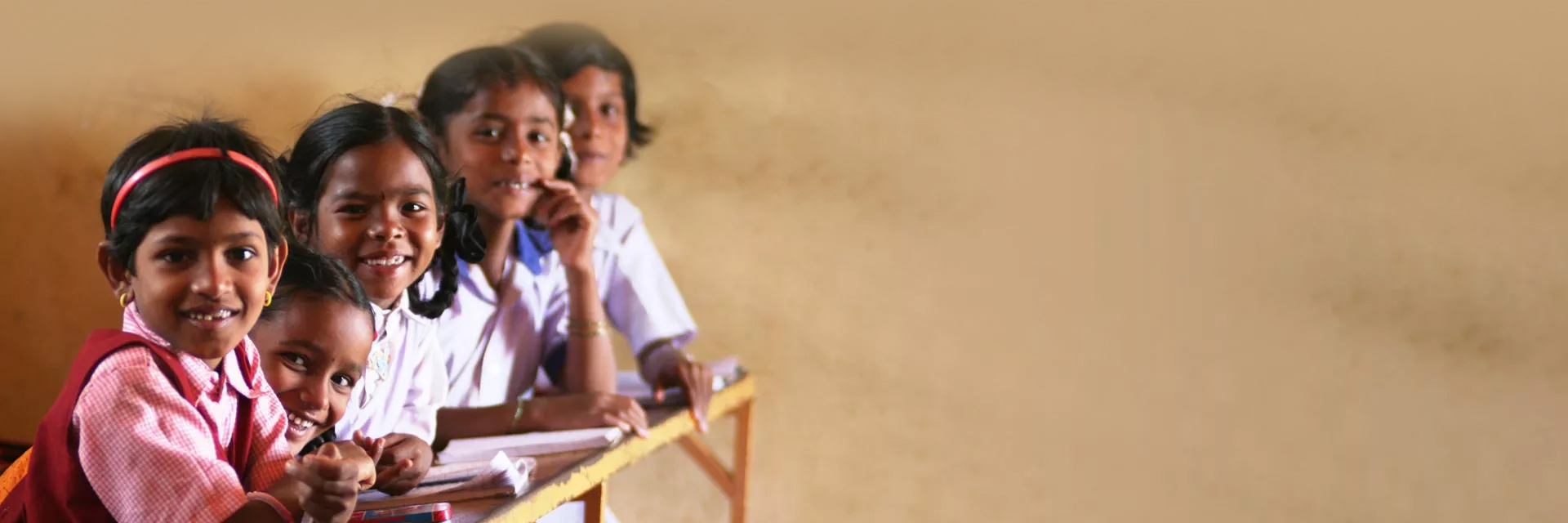 Education is civilization’s greatest leveler. It has the power to empower the weakest of the weak, bring peace to the world, and alleviate poverty. It is often seen as the only lit path in the pursuit of happiness.
Education is civilization’s greatest leveler. It has the power to empower the weakest of the weak, bring peace to the world, and alleviate poverty. It is often seen as the only lit path in the pursuit of happiness.
- Gurudev Sri Sri Ravi Shankar
 Education is civilization’s greatest leveler. It has the power to empower the weakest of the weak, bring peace to the world, and alleviate poverty. It is often seen as the only lit path in the pursuit of happiness.
Education is civilization’s greatest leveler. It has the power to empower the weakest of the weak, bring peace to the world, and alleviate poverty. It is often seen as the only lit path in the pursuit of happiness.
- Gurudev Sri Sri Ravi Shankar
Strategy
We have a well-defined strategy for our education projects that has been developed and refined with time. This strategy is built on three pillars:
Engaging with the community: The Art of Living proactively reaches out to community influencers to ensure that the children stay in school. We educate their parents and other family members about the importance of education even before the children are taught. School teachers are chosen from the community itself and are trained appropriately to ensure that the bond with the community is strong. This results in a low dropout rate.
Providing free education: The majority of the students at our schools are first-generation learners who come from backgrounds of extreme poverty. The Art of Living provides free and value-based education to children from vulnerable sections while addressing the social, economic, and cultural barriers that keep children away from school.
Value-based education: The Art of Living schools nurture a child holistically. A major focus of our education strategy is to combine formal education with life skills that include building the child’s confidence, leadership, and interpersonal skills and developing spiritual tools through meditation techniques and a foundation of human values. As a result, family values are strengthened, and progressive attitudes diminish social and cultural barriers.
Impact
As the result of our sustained efforts in this sector, The Art of Living today operates 1,262 free schools catering to almost 84,689+ children in tribal regions, rural areas, and urban slums across 22 states in India. Highlights of our schools include:
- Most of the children are first generation learners.
- Many of our schools are located in areas without government-run schools.
- Students are given clothes, shoes, books, writing materials, bus service, and daily mid-day meals.
- We teach yoga, meditation, sports, and creative activities like dance, music, drawing, and painting to promote a healthy body and mind.
- Our schools have a gender ratio of 48 girls to 52 boys, which is higher than the national average.
- To date, 17,000+ Students benefit from smart classrooms.
1,00,000+ Students
are being provided free education
1,262 Free Schools
in Rural, Urban & Tribal Areas
22
States
2,032
Villages
17,000+ Students
benefit from smart classrooms
48 girls to 52 boys ratio
higher than the national average
Hear it from the source

I'm Anil Kumar Murmu, an 8th-grade student at Sri Sri Vidya Mandir High School in Hendauljuri, Jharkhand. I enjoy learning here. Besides academics, we engage in computer skills, robot programming, drawing, football, and archery. My parents, who are farmers, are proud of my education here. I aspire to join the Indian Armed Forces and love studying with all my teachers.
Anil Kumar Murmu, Class IX
The Art of Living Free Tribal Schools
Hendaljuri Village, Jharkhand

I'm Babita Patar from Ghatsila, Jharkhand, a Sri Sri Vidya Mandir graduate of Haldi High School's 2013 batch. I teach at Kesarpur School, a branch of the same institution under Vyakti Vikas Kendra India. I thank our dedicated teachers for their hard work in providing quality education.
Babita Pathar, Teacher
The Art of Living Free Tribal Schools
Ghatshila Village, Jharkhand

I'm Sima Gope, a Sri Sri Vidya Mandir student in Hendaljuri, Ghatshila village. Despite facing challenging economic circumstances within my family, my parents could not afford my education. However, thanks to the incredible support provided by my school, I received free education and essential resources such as books and uniforms.
Sima Gope, Ex Student
The Art of Living Free Tribal Schools
Ghatshila Village, Jharkhand

I'm Sudhanshu Sahoo, and I have been teaching at Sri Sri Vidya Mandir High School in Hendaljuri since 2018. The nurturing environment here encourages every child's progress, which I sincerely appreciate. It's remarkable that children can access a school that inspires excellence in such a remote area. I am fortunate to teach here, and I thank Gurudev Sri Sri Ravi Shankar for this opportunity.
Sudhanshu Sahoo, Teacher
The Art of Living Free Tribal Schools
Hendaljuri Village, Jharkhand



